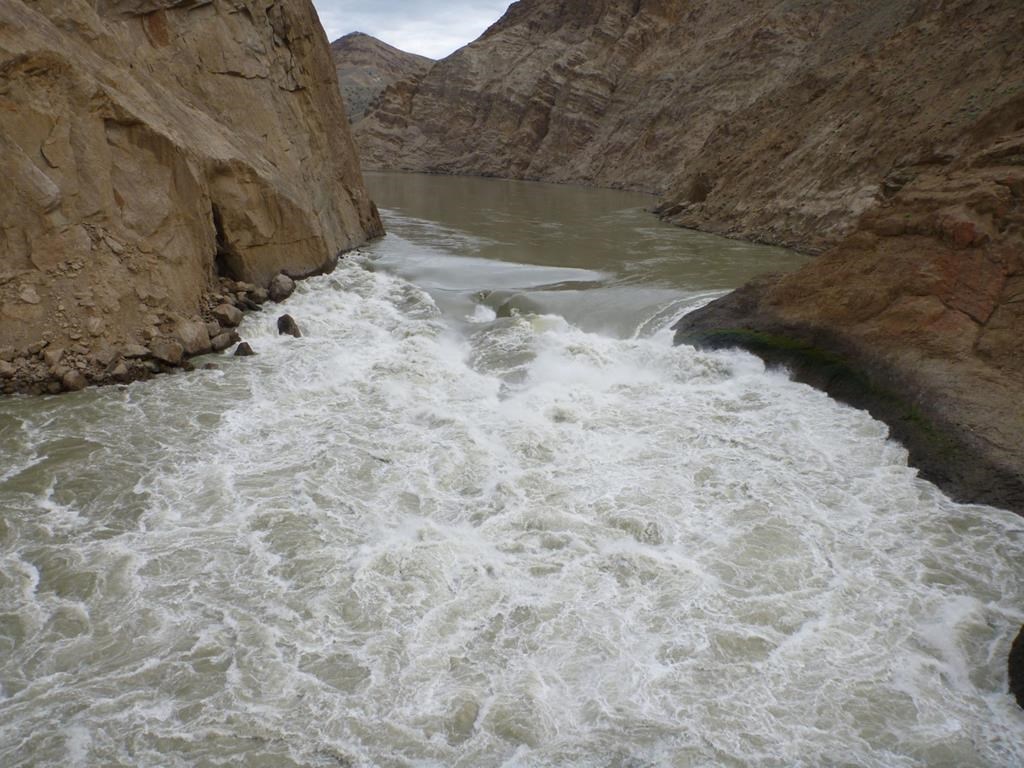Federal and provincial officials have temporarily ceased helicopter transfers of salmon past a massive landslide in the Fraser River, saying enough fish are making it through the passage on their own.

There remains uncertainty, however, about whether smaller species of salmon will have the same success finding their way through.
The helicopter operations could resume in a few days if those fish run into trouble, officials said.
Crews have been working long hours to try to clear a natural passage past the slide in a remote area northwest of Kamloops, which was discovered in late June.
The slide created a five-metre waterfall that made it nearly impossible for millions of salmon to make it to their natural spawning grounds upstream, prompting the use of helicopters and eventually trucks to help transport the fish.
The unified federal-provincial-First Nations incident command said Wednesday that nearly 60,000 sockeye and chinook salmon have been transported past the slide by helicopter.
But officials have said more fish are getting through the passage naturally, thanks to continued work to scale the rocks that fell into the river and those above the slide site. Decreased water levels have also played a role.

Get daily National news
On Sunday, 3,000 fish made their way through the passage in a single day, marking a new record.
WATCH: (Aug. 6) More than 2 million salmon at risk due to Big Bar landslide

The focus now turns to the arrival of pink salmon, which are smaller and slower than chinook and sockeye salmon.
Michael Crowe with Fisheries and Oceans Canada (DFO) said an estimated 1.5 million pink salmon will pass through the remote area, and coho and steelhead will show up soon after.
Just over 200 pink salmon were transferred past the slide by helicopter Wednesday, joining another 150 that have already been transported so far.
Three coho salmon have been transported to date.
Crews will spend the next few days monitoring the passage of the pink salmon to see if they can make it through the passage on their own.
The helicopter and truck transports will resume if those fish don’t see the same success that the chinook and sockeye have.
Crowe said engineering work to blast the rock obstructing the river has been challenging.
Engineers have studied a possible route for an excavator to descend down the west wall of the canyon, which officials say would “greatly enhance” efforts to clear the passageway.
Crowe said plans are also under way to use a so-called spider excavator at the base of the slide so that it can use wheels or legs to move around difficult terrain and allow for rocks to be blasted and removed.
While helicopter operations are suspended, testing will continue on a second fish wheel that could be added to one that’s already in place.
Experts are also exploring whether the wheels, which operates like a watermill and catches the salmon in small baskets for transport, could run 24 hours a day.
Officials said overnight operation of one wheel could catch an additional 600 fish.








Comments